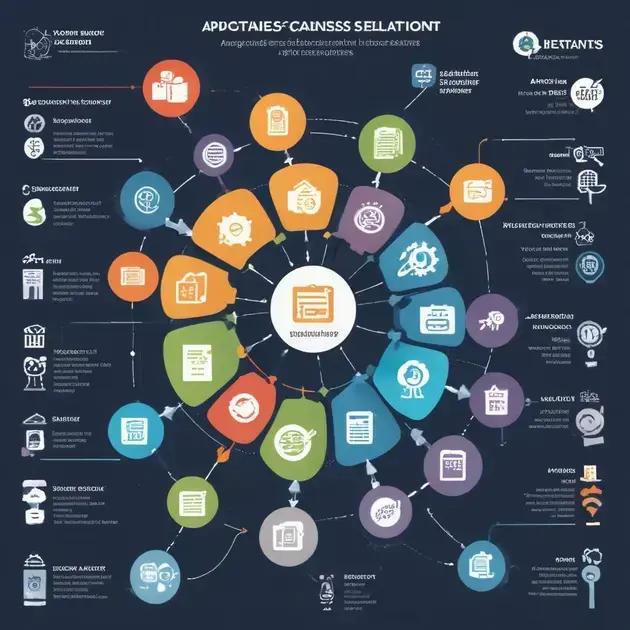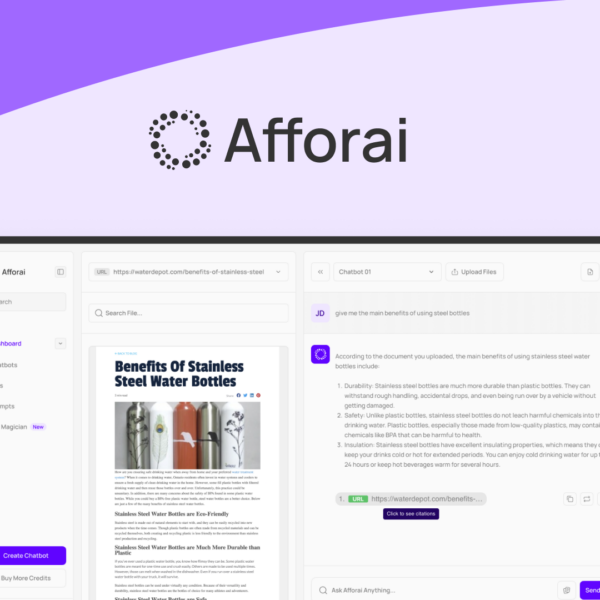Business software applications are essential tools that help organizations streamline operations, improve efficiency, and enhance productivity by automating tasks. Key types include accounting, CRM, project management, and HR software, all designed to meet specific business needs and optimize workflows.
Business software applications are essential tools for companies looking to enhance efficiency and productivity. By implementing the right software, businesses can automate many processes and ensure everything runs like a well-oiled machine. In this post, we’ll delve into what these applications are, their benefits, how to choose the right ones, and the types available today.
What Are Business Software Applications?
Business software applications are digital tools designed to help organizations streamline operations, manage resources, and enhance productivity. These applications come in various forms, catering to different business needs, from finance and accounting to human resources and customer relationship management.
Types of Business Software Applications
There is a wide range of business software applications available. Here are some common categories:
- Accounting Software: Helps manage finances, track expenses, and generate reports.
- Project Management Tools: Assist teams in planning, executing, and tracking project progress.
- Customer Relationship Management (CRM): Enables businesses to manage interactions with customers and prospects.
- Human Resources Software: Streamlines HR processes such as recruitment, payroll, and employee management.
- Inventory Management Systems: Helps businesses keep track of stock levels, orders, and deliveries.
Importance of Business Software Applications
Using business software applications is crucial because they allow organizations to automate routine tasks, reduce manual errors, and improve efficiency. By leveraging technology, companies can focus more on strategic decision-making and less on administrative processes.
Choosing the Right Software
When selecting a business software application, it’s vital to assess the specific needs of your organization. Consider factors such as scalability, ease of use, integration with existing systems, and customer support. Additionally, reading reviews and seeking recommendations can help in making an informed decision.
Benefits of Utilizing Business Software Applications

Utilizing business software applications can offer numerous advantages that can significantly enhance operational efficiency. Organizations are increasingly turning to these applications to improve various aspects of their work processes.
Increased Efficiency
One of the primary benefits of business software applications is the boost in efficiency they provide. By automating routine tasks, such as data entry and payroll processing, businesses save valuable time. This allows employees to focus on more complex projects and operations that require human creativity and analysis.
Cost Savings
Business software applications can lead to substantial cost savings. Automating tasks reduces the need for additional manpower, which helps cut down on labor costs. Moreover, cloud-based software often eliminates the need for expensive hardware and maintenance.
Improved Accuracy
With manual processes, the chance of errors increases. Business software applications help minimize these errors by ensuring data accuracy. Automated systems reduce the likelihood of mistakes associated with human input and provide reliable reporting and analytics.
Enhanced Collaboration
These applications promote better collaboration among teams. Tools such as project management software allow multiple users to work on tasks simultaneously, share updates, and communicate in real time. This creates a more cohesive working environment and speeds up project completion.
Data Analysis and Reporting
Business software applications enable comprehensive data analysis and reporting functionalities. Organizations can track performance metrics, user activity, and operational trends. Access to this data helps businesses make informed decisions and strategically plan for the future.
How to Choose the Right Business Software Applications
Choosing the right business software applications is essential for maximizing efficiency and ensuring that your business runs smoothly. With many options available, it’s important to make informed decisions that align with your organization’s specific needs.
Assess Your Business Needs
The first step in selecting software is to evaluate your business requirements. Identify areas where you struggle or where processes can be improved. Creating a list of needs will help you narrow down options that cater specifically to your industry and operations.
Consider User Experience
User experience is vital when choosing software. It should be intuitive and easy for employees to use. Consider conducting trials or demos to get feedback from your team about the software’s functionality and user interface. This ensures that everyone will feel comfortable using it.
Evaluate Integration Capabilities
Ensure that the software can integrate smoothly with your existing systems. Look for applications that allow easy data migration and synchronization. This will prevent the need for manual data entry and reduce errors while maintaining a seamless workflow.
Check for Customer Support
Reliable customer support is critical for any software application. When issues arise, you want to address them quickly to minimize downtime. Look for vendors who offer training resources and customer support to assist you whenever needed.
Review Cost and Scalability
Lastly, consider your budget and future growth. Determine whether the software’s pricing fits your budget and if it scales with your business needs. Some applications charge monthly, while others have one-time fees. Reviewing cost structures helps you plan for both current and future expenses.
Common Types of Business Software Applications

There are several common types of business software applications that organizations use to meet various needs and enhance productivity. Understanding these types will help businesses choose the right tools for their operations.
1. Accounting Software
Accounting software is essential for managing financial transactions and maintaining accurate records. This type of software helps businesses track income, expenses, invoices, and generate financial reports. Examples include QuickBooks and Xero.
2. Customer Relationship Management (CRM)
CRM software is designed to manage a company’s interactions with current and potential customers. It helps in tracking communications, managing sales pipelines, and analyzing customer data. Popular CRM solutions include Salesforce and HubSpot.
3. Project Management Tools
Project management software aids teams in planning, executing, and monitoring projects. These tools help organize tasks, assign responsibilities, and track progress. Asana and Trello are popular project management platforms.
4. Human Resources Management Software (HRMS)
HRMS helps organizations manage employee-related processes, including recruitment, payroll, performance evaluations, and benefits administration. Examples of HRMS include BambooHR and Workday.
5. Inventory Management Software
Inventory management software assists businesses in tracking stock levels, orders, sales, and deliveries. This software ensures that products are always available when customers need them. Notable examples include TradeGecko and Zoho Inventory.
Integrating Business Software Applications into Your Workflow
Integrating business software applications into your workflow can significantly enhance productivity and streamline operations. Proper integration ensures that different software systems work together efficiently to meet your business goals.
Identify Key Processes
Start by identifying the key processes within your organization that will benefit from software integration. Look for tasks that require collaboration between departments, such as sales and customer support, to improve communication and efficiency.
Choose Compatible Software
Select software applications that are designed to integrate seamlessly. When choosing tools, check for compatibility features and API capabilities that allow different systems to communicate with each other. This reduces the risk of data silos and ensures fluent data exchange between applications.
Plan the Integration Process
Planning is crucial for successful integration. Create a step-by-step strategy that outlines how to incorporate new software into existing workflows. This may involve scheduling training sessions for staff, setting a timeline for implementation, and mapping out how data will flow between applications.
Provide Training and Support
Once integration is underway, provide adequate training and support to staff. Helping employees understand how to use new software effectively can reduce frustration and enhance adoption rates. Consider offering hands-on training sessions or access to online resources.
Monitor and Optimize
After integrating business software applications, it’s important to monitor their performance. Gather feedback from users and assess whether the integration meets your business’s needs. Make adjustments as necessary to optimize workflows and address any issues that arise.
In Summary: Harnessing Business Software Applications
Utilizing business software applications is a smart move for any organization aiming to improve efficiency. By understanding the different types of software and their benefits, businesses can make informed decisions that support their growth.
Identifying the right applications, integrating them effectively into workflow, and ensuring proper training for staff is essential. When implemented correctly, these software solutions can streamline processes, save time, and enhance collaboration.
Ultimately, the right business software applications will help your organization thrive by optimizing operations and enabling better decision-making.
FAQ – Frequently Asked Questions about Business Software Applications
What are business software applications?
Business software applications are digital tools designed to help organizations manage operations, enhance productivity, and streamline processes.
How can business software applications improve efficiency?
These applications automate routine tasks, reducing the time spent on administrative work and allowing employees to focus on more strategic activities.
What types of business software applications are commonly used?
Common types include accounting software, customer relationship management (CRM), project management tools, human resources software, and inventory management systems.
How do I choose the right business software for my company?
Assess your business needs, consider user experience, ensure compatibility with existing systems, and evaluate customer support before making a decision.
What is the importance of integrating software applications?
Integrating software applications allows for better data flow between systems, minimizing errors and maximizing efficiency across different departments.
How can I train my staff to use new software effectively?
Providing comprehensive training sessions, creating user manuals, and offering ongoing support can help staff adapt to new software and maximize its potential.




